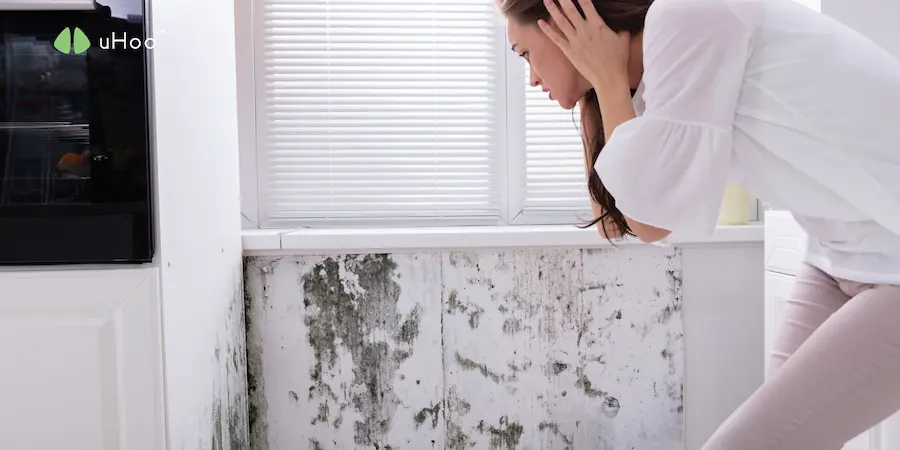For families living with allergies, the invisible threats lurking in indoor air can turn a comfortable home into a constant source of discomfort. From incessant sneezing and itchy eyes to persistent congestion and even asthma attacks, airborne allergens are a significant challenge. While avoiding triggers outdoors can be difficult, taking control of your indoor air quality is not only possible but also highly effective, thanks in large part to the unsung hero of air purification: the HEPA filter.
Before we delve into the solution, it’s crucial to understand the common culprits that invade our homes and trigger allergic reactions:
- Pollen: While often associated with the outdoors, pollen can easily drift in through open windows and doors, or hitch a ride on clothing and pets.
- Pet Dander: Tiny flecks of skin shed by animals, pet dander is a potent allergen that can remain suspended in the air for long periods and settle on surfaces.
- Dust Mites: Microscopic creatures that thrive in warm, humid environments, dust mites feed on dead skin cells. Their droppings are a major allergen.
- Mold Spores: These microscopic reproductive particles from mold can become airborne and trigger allergic reactions, especially in damp areas of the home.
- Cockroach Allergens: Proteins from cockroach droppings and body parts can also become airborne and cause allergic symptoms.
These allergens are often tiny – measured in micrometers – making them invisible to the naked eye but potent enough to disrupt daily life for millions.
The HEPA Solution: Your First Line of Defense
This is where HEPA filters come in. HEPA stands for High-Efficiency Particulate Air, and it’s more than just a fancy acronym; it’s a filtration standard. To earn the HEPA designation, a filter must be capable of capturing at least 99.97% of airborne particles that are 0.3 micrometers (µm) in size. This seemingly specific number is vital because particles of this size are considered the most difficult for filters to trap. By effectively capturing these, a HEPA filter is incredibly efficient at grabbing both larger and smaller particles.
How does it work? Imagine a highly intricate, labyrinthine maze made of densely packed, fine fibers. As air is drawn through this filter, allergens are trapped through several physical mechanisms:
- Interception: Larger allergens, like some pollen grains, simply encounter the fibers and get stuck.
- Impaction: Medium-sized particles, carried by the airflow, are unable to navigate the filter’s tight turns and collide directly with the fibers, adhering to them.
- Diffusion: The tiniest particles, including dust mite allergens and pet dander, move erratically due to collisions with air molecules (Brownian motion). This erratic movement increases their chances of striking a fiber and becoming trapped.
This multi-pronged approach ensures that a HEPA filter is remarkably effective at removing the vast majority of common indoor allergens, preventing them from recirculating in your living spaces.
Why HEPA Filters are Vital for Allergic Families
For families with allergy sufferers, integrating HEPA filtration into your home offers profound benefits:
- Reduced Allergen Exposure: The most direct benefit is the significant reduction in airborne allergens, leading to fewer triggers for allergic reactions. This can translate to less sneezing, itching, wheezing, and skin irritation.
- Better Sleep Quality: Allergies often worsen at night. A HEPA air purifier in the bedroom can create a cleaner breathing environment, promoting more restful sleep for allergy sufferers.
- Decreased Medication Dependence: While not a cure, reducing exposure to allergens can sometimes lead to a decreased reliance on allergy medications.
- Improved Overall Well-being: Breathing cleaner air simply feels better. It reduces the constant burden on the respiratory system and contributes to a more comfortable, healthier home environment.
- Proactive Allergy Management: Instead of just reacting to symptoms, HEPA filters enable a proactive approach to managing indoor allergens.
HEPA filters are commonly found in dedicated air purifiers, high-efficiency vacuum cleaners, and some HVAC systems. For maximum benefit, a standalone HEPA air purifier in key living areas and bedrooms is often recommended for allergic families.
The Perfect Partnership: HEPA Filters and a uHoo Air Quality Monitor
While HEPA filters are incredibly effective at removing particulate allergens, they are only one piece of the indoor air quality puzzle. To truly optimize your home environment and empower your family to breathe easier, combining a HEPA filter with a smart air quality monitor like the uHoo is an invaluable strategy.
Here’s how a uHoo monitor complements your HEPA filtration:
- Visibility of Invisible Threats: A uHoo monitor provides real-time data on specific airborne allergens like PM2.5 (fine particulate matter that includes many allergens) and other crucial environmental factors. You can see how effectively your HEPA filter is working and if there are spikes in allergen levels.
- Identification of Other Triggers: Allergies aren’t just about particles. uHoo tracks other parameters that can impact respiratory health, such as Volatile Organic Compounds (VOCs) from cleaning products or furniture, CO2 levels indicating poor ventilation, and even temperature and humidity which influence dust mite and mold growth.
- Optimizing HEPA Usage: With uHoo’s data, you can know exactly when your air quality dips and when to run your HEPA air purifier, rather than just guessing. This can help you save energy while ensuring peak performance when needed.
- Pinpointing Problem Areas: If certain rooms consistently show higher allergen or pollutant levels, uHoo helps you pinpoint those areas, allowing you to strategically place your HEPA purifier or investigate other sources.
- Long-Term Trend Analysis: uHoo’s historical data allows you to track patterns in your indoor air quality, helping you identify recurring issues and assess the long-term effectiveness of your allergy management strategies.
In essence, your HEPA filters act as tireless guardians, actively cleaning your air, while your uHoo air quality monitor serves as your intelligent guide, providing the insights you need to understand, control, and ultimately conquer the challenges of indoor air quality.



